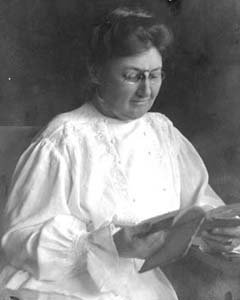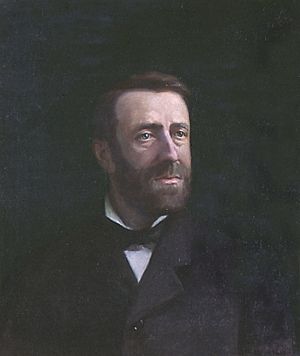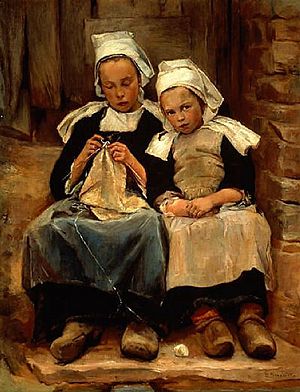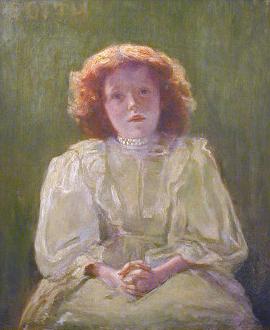Enella Benedict facts for kids
Quick facts for kids
Enella Benedict
|
|
|---|---|
 |
|
| Born | December 21, 1858 |
| Died | April 6, 1942 (aged 83) |
| Nationality | American |
| Education | School of the Art Institute of Chicago, Art Students League of New York, Academie Julien |
| Known for | Painting |
| Movement | Realism, Impressionism |
Enella Benedict (born December 21, 1858 – died April 6, 1942) was an American artist. She was known for her realism and landscape paintings. Enella Benedict taught art at the School of the Art Institute of Chicago. She also helped start and lead the Art School at Hull House for almost 50 years.
Contents
Early Life and Art Studies
Enella Benedict was born in Lake Forest, Illinois. Her father, Amzi Benedict, was a cloth merchant and also served as mayor of Lake Forest. Enella had four younger siblings.
She studied painting and drawing at Lake Forest University. Later, she went to the School of the Art Institute of Chicago. She also studied at the Art Students League of New York. To further her art education, Enella traveled to Paris, France. There, she attended the famous Académie Julian. However, as a female student, she faced challenges. She received less training and paid more for her classes than male students.
Artistic Career and Hull House
Enella Benedict created many types of art. She painted portraits, figures, landscapes, and city scenes. She used both oil paints and watercolors. Her art style was influenced by Realism and Impressionism. This meant she painted real people and places around her. She often painted people from Hull House and local villagers. She also painted beautiful seascapes and country views.
In 1892, Enella Benedict helped create the Art School at Hull House. She became its first director. Hull House was a "settlement house" in Chicago. These places helped people in poor neighborhoods. They offered education and support. Many women leaders, like Jane Addams, lived and worked at Hull House.
Benedict lived at Hull House for many years. She supported the Art School program for almost 50 years. She taught classes like clay modeling, drawing, painting, and lithography. She also managed the program for artists who lived and worked there. The art program aimed to give cultural chances to people in the neighborhood. It also showed that some jobs, like textile work, could be art forms.
Enella Benedict believed that art should be for everyone, not just the rich. She thought art could make life better for people who worked long hours. It could offer beauty and ways to express themselves. Students could take art classes at Hull House for a very low cost. Many students from Hull House later went on to study at the School of the Art Institute.
While at Hull House, she also taught at the School of The Art Institute of Chicago. She worked there in the mornings to earn money. This allowed her to work at Hull House in the afternoons without pay. She often traveled to Europe during the summer breaks.
Enella Benedict showed her artwork at important exhibitions. These included the 1893 World's Columbian Exposition in Chicago. Her paintings were displayed in the Palace of Fine Arts and The Woman's Building. Her work was also shown at the Art Institute of Chicago. In 1938, an art gallery at Hull House was named the Benedict Gallery in her honor. This gallery helped show the work of Hull House artists.
She was a member of the Palette Club in Chicago. Today, her art can be found in several collections. These include Hull House, the Rockford Art Museum, the National Museum of Women in the Arts, and the Smithsonian Institution.
Death
Enella Benedict passed away on April 6, 1942, in Richmond, Virginia.
Selected Works
- A Foot Path, watercolor, shown in 1895.
- Brittany Children, shown at the 1893 World's Fair.
- Counting the Ships, shown at the 1893 World's Fair.
- Daily Bread, shown at the 1893 World's Fair.
- Evening in the Village, shown in 1901.
- Greek Easter Procession on Halstead Street (Chicago, Illinois), pastel, 1907.
- Landscape
- Old Stories, shown at the 1893 World's Fair.
- Salt Marsh and Cedars, watercolor, shown in 1895.
- The many, pastel, 1907.
- Young Boy at Work
- William Tomlinson Plant
Images for kids
See also
 In Spanish: Enella Benedict para niños
In Spanish: Enella Benedict para niños





